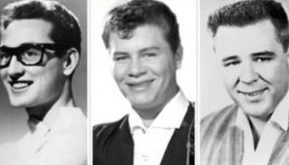Written by Danielle Shaw, Staff Writer
Case-sensitive passwords can be a drag when you fail to recall your first pet’s name, and can’t seem to prove that you’re simply visually impaired and NOT an alien when attempting to reset them. You think to yourself, “If only there were a simpler way.”
Lucky for you MasterCard has got you covered!
MasterCard has implemented a new system called MasterCard Identity Check—or, idiomatically, “selfie pay”. This presents an easier mobile experience, and with high hopes, will eliminate consumer frustration. By simply downloading the MasterCard app, customers can now pay bills with a selfie!
Facial recognition and fingerprint scans protect online shopping and reduces fraudulent activity. Typical pins and encrypted codes are easily forgotten or stolen. In place of these usual payment procedures, the selfie and fingerprint identification methods are proven to be more secure.
Chief Product Security Officer, Ajay Bhalla, indicated that “passwords that are pin are easy to forget, and therefore easier to hack.” When taking the “selfie,” the user will have to blink in order to prove that he/she is a live person and not just an old photo being used to dupe the system.
Over the decades, Visa has been the trailblazer for electronic banking. MasterCard has been the primary competitor with Visa, but due this high-tech gear shift, the company has now found its momentum in this economic drag race. Undoubtedly, there are skeptics on the matter of this invention’s proficiency, but MasterCard is prepared to release this technological advancement with little to no glitches.
MasterCard began testing the new feature with virtually 1,000 consumers in the United States and the Netherlands in 2015. The company plans to make the innovation more broadly available in the United States, the United Kingdom, Canada and potentially other markets over the course of this summer.
“We are currently prototyping facial recognition to be converted and stored as encrypted code on the device as part of the MasterCard Identity Check rollout,” said Jane Khodos, a vice president for communications at MasterCard.
The fingerprint data will be processed and stored locally on the device, according to MasterCard. For facial recognition, users will snap an initial photo of their face that will be converted into a string of 0s and 1s. The original image will be destroyed, but the digitized protected version will be stored and matched to the blinking selfies to verify the user’s identity.
 The Spectator The independent student newspaper of Valdosta State University
The Spectator The independent student newspaper of Valdosta State University







